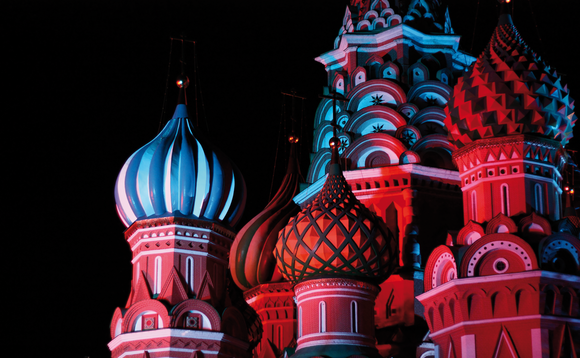
Ukraine crisis threatens Russian FDI

Ellie Pullen looks back at Russia’s foreign direct investment (FDI) inflows before the recent developments in the Ukraine and asks what is in store for the country
As the situation in the Ukraine intensifies, governments in the west have suspended talks on closer economic cooperation between the European Union and Russia. But, prior to the rising tension, Russian efforts to boost foreign direct investment were paying off.
At the end of January, the United Nations Conference on Trade and Development (UNCTAD) released its Global Investment Trends Monitor for 2013. The report announced that, for the first time, Russia had ranked third worldwide in terms of FDI inflows.
The country saw $94bn in FDI inflows last year, representing an 83% increase on 2012. And players such as the $10bn Russian Direct Investment Fund (RDIF) worked hard to boost outside investment into the Russian market.
Prior to the rising tension between Russia and the Ukraine, the RDIF played an important role in procuring some impressive bouts of foreign funding for the country. In October last year, US-based One Equity Partners made its first foray into the Russian market alongside RDIF, with the $94m buyout of tyre manufacturer Voltyre-Prom. Likewise, the fund took part in the $100m funding round for Moscow-based IT outsourcing services provider Maykor alongside CapMan in August last year.
According to RDIF director Sean Glodek, speaking to unquote" in late-February: "International private equity investors have played an important role in driving this upward trend in FDI. Private equity firms see Russia as an attractive investment destination because of its strong fundamentals, including a fast growing middle-class, disposable income rising by over 50%, low unemployment and key pro-business reforms being implemented.
"These positive trends have been acknowledged by global private equity firms telling us that they plan to intensify their focus on Russia in 2014. Over the past year, RDIF co-invested with Cartesian Capital, BlackRock, One Equity Partners and CapMan, among others."
On the corporate side, a large proportion of the increase in FDI into Russia came from BP's acquisition of an 18.5% stake in state oil giant Rosneft (following Rosneft's $57bn purchase of TNK-BP).
Seductive sectors
The areas that were most likely to attract private equity players in Russia were healthcare, biotechnology, consumer, technology, infrastructure and industrials, said Glodek.
Sectors that are exploiting the increasing demand for infrastructure and the modernisation of Russia were, until recently, set to produce a goldmine of investment opportunities. Glodek said in February: "There are positive long-term investment dynamics in Russia. Infrastructure has become particularly attractive for large institutional investors, with the Russian government creating a number of special incentives for foreign funds to invest."
Russia experienced disappointing economic results in 2013 – GDP grew by 1.3%, less than half of the growth in 2012. But, the country still has the highest GDP per capita of all the BRICs (Brazil, Russia, India and China). As well as RDIF's ties to the private equity industry, the fund had also established several partnerships with sovereign wealth funds to bolster international appeal for long-term investment opportunities in Russia.
In November, RDIF partnered with Caisse des Dépôts International to launch the €1bn Russia-France Investment Fund. The vehicle has also joined forces with Fondo Strategico Italiano to create the €1bn Russia-Italian Investment Fund. "These partnerships are testament to the increasing confidence of international investors in the Russian market," said Glodek.
Trade sanctions
Despite growing enthusiasm for investing in Russia, the move to annex Crimea is likely to cause the EU to seriously consider taking punitive measures. According to a briefing published yesterday by Open Europe, there is an array of potential sanctions that could be applied.
One of the options is to limit the financing sources of Russian firms and the Kremlin, which could mean a ban on financing all Russian concerns (both public and private). With the RDIF having worked relentlessly to increase FDI inflows, this sanction could be the most painful and the most significant for private equity. The RDIF's efforts clearly highlight Russia's need for the liquid markets of the EU and the US.
The most severe sanction would be a total ban on trades between Russia and the EU and the US. However, this drastic move is seen as unlikely because of the fragmented nature of the EU – with 28 members it would be near impossible to reach a single stance in the short term.
While uncertainty over Ukraine's future and Russia's next move remains at the forefront of political and financial minds alike, what is clear is that the asset class is unlikely to be boosting its focus on Russia for the time being.
Latest News
Stonehage Fleming raises USD 130m for largest fund to date, eyes 2024 programme
Sponsor acquired the public software group in July 2017 via the same-year vintage Partners Group Global Value 2017
Stonehage Fleming raises USD 130m for largest fund to date, eyes 2024 programme
Czech Republic-headquartered family office is targeting DACH and CEE region deals
Stonehage Fleming raises USD 130m for largest fund to date, eyes 2024 programme
Ex-Rocket Internet leader Bettina Curtze joins Swiss VC firm as partner and CFO
Stonehage Fleming raises USD 130m for largest fund to date, eyes 2024 programme
Estonia-registered VC could bolster LP base with fresh capital from funds-of-funds or pension funds








